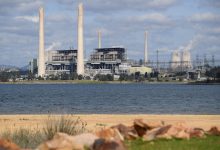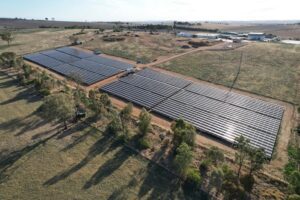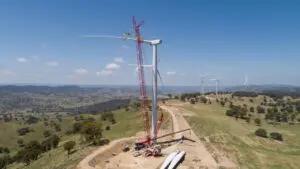The Australian Energy Regulator is to consider whether to make a formal declaration of a “reliability gap” to fill a potential supply shortfall created by the planned closure of the coal-fired Liddell power station in early 2024.
The AER is considering a request lodged by the Australian Energy Market Operator (AEMO) to determine whether the newly created Retailer Reliability Obligation could be triggered to fill a forecast gap in electricity supplies, following the closure Liddell and under the country’s strict new interim reliability standards.
The move adds yet another dimension to the debate over the future of New South Wales’ electricity system, with regulators taking their own proactive measures to ensure that there are adequate electricity supplies, at the same time the Morrison government is threatening to make its own intervention in the energy market to build a new gas-fired generator.
The Morrison government has claimed another 1,000MW of new capacity would be required to fill the gap left by Liddell, although the market bodies say the current need is for just 154MW of additional power supplies, assuming that no other capacity gets built over the next three years.
This determination is based on the additional demands of the strict new interim reliability standard, where allows for just 0.0006% of electricity demand to go unmet, and is much is a stricter standard than the current NEM-wide Reliability Standard of 0.002 per cent.
AEMO has written to the AER, asking the regulator to determine whether a ‘T-3 reliability instrument’ should be issued under the Retailer Reliability Obligation.
Such an instrument represents a formal declaration from the AER that there is expected to be a shortfall in available generator capacity needed guarantee reliable supplies of electricity in three year’s time, and establishes an expectation that the electricity sector will respond to fill the gap by investing in or contracting new generation capacity.
The AER has until the end of December to issue the ‘T-3 reliability instrument’ to ensure that the three year notice period is provided prior to 2024.
The process, which exists under the RRO, provides an effective three-year warning for the market to build additional generation capacity, and could lead to a ‘triggering’ of the RRO.
If the RRO is triggered, electricity retailers will be required to enter into sufficient ‘qualifying contracts’, demonstrating that they have secured necessary supplies of electricity, or equivalent financial contracts, to ensure the ongoing reliable operation of the electricity market and electricity retailers face being served with stiff penalties if they are found to be short.
Before making a declaration, the Australian Energy Regulator is seeking feedback from energy market participants,
The Morrison government had called for 1,000MW of new investment dispatchable generation to be committed by March 2021, to ensure that there is adequate replacement generation capacity in the market by the time Liddell closes.
Prime minister Scott Morrison later walked this back to just 250MW, while suggesting the government may intervene in the energy market, using government-owned Snowy Hydro to build a new 250MW gas-fired generator.
The suggestion had been slammed by much of the energy market, with some of the large energy companies, speaking through the Australian Energy Council, telling the government that such threats of intervention where counterproductive, and actually making it harder to invest in new projects.
““The sector is struggling to make final investment decisions in an environment of ongoing policy uncertainty,” the Australian Energy Council’s chief executive, Sarah McNamara said at the time.
“There are no material reliability concerns that would warrant this kind of interventionist approach, and there are already mechanisms in place to address any shortfall identified. The Australian Energy Market Operator’s most recent assessment identified a potential shortfall in NSW of only 154MW.”
Department officials told a hearing of senate estimates that they had not been consulted on Morrison’s claims about how much generation capacity may be needed to fill a gap left by Liddell power station, suggesting that the figures were likely informed by what the Morrison government thought was necessary to maintain lower prices, rather than concerns about reliability.
NSW energy minister Matt Kean has made clear that the NSW government intends to primarily see new wind and solar generation build to replace four of the state’s coal-fired generators, including Liddell, that are expected to close by 2035.








